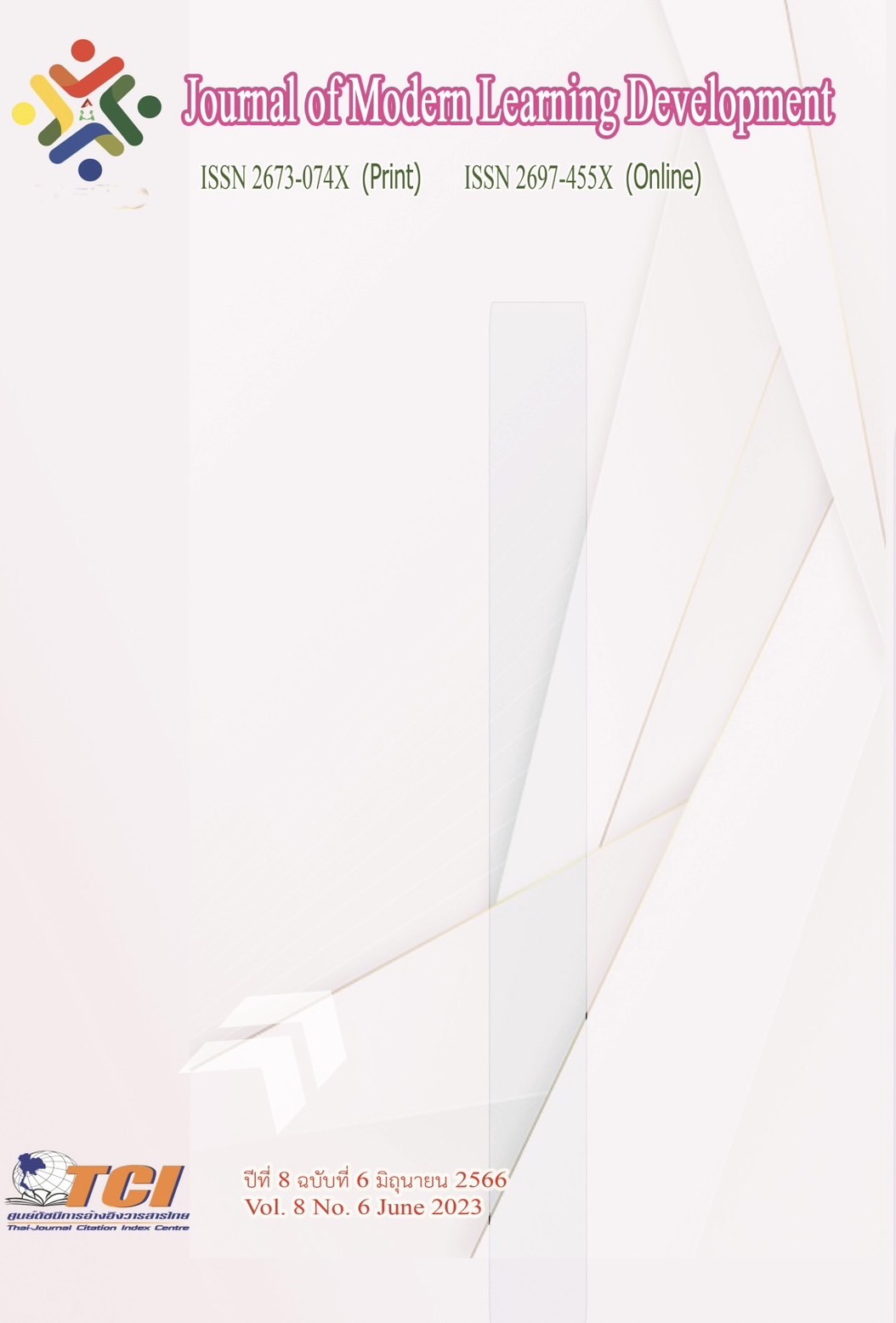Research on Mezzo-Soprano Teaching for First-Year Bachelor Students at Shandong University of Art in Shandong of China
Main Article Content
Abstract
The purpose of this study was (1) to study the teaching method of mezzo-soprano vocal music, (2) to create a video of mezzo-soprano teaching, and (3) to use multi-media for teaching students. (4) to measure the results of teaching and evaluation for students' satisfaction for first-year bachelor students at Shandong university of art, Shandong province, China. This research used mixed method research and experimental study research. The experiment tool was the video mezzo-soprano teaching for first-year bachelor students at Shandong university of art. Total 13 weeks, 50 minutes to experiment per week. The researcher chooses 5 Students in first-year vocal music by purposive sampling—the research hypothesis: the high student. The post-test score will go up to 85% compared to the middle student's pre-test score. The post-test score will go up to 80% compared to the lower student's pre-test score. The post-test score will go up to 70 % compared to the pre-test score. The experiment tools passed the experts' checked for accuracy and conformity at 0.80.
The research results were: three tests used 13 video mezzo-soprano teaching instructional materials. Tests in the 5th, 10th, and 13th have 5 students with the same musical proficiency standards—a person who, out of all three tests, all had better grades. In the first test, the students scored low in singing skills, representing 80% of the total students, and middle scores represented 20% of the total students. Second-test students have better grades, resulting in the students scoring middle in singing skills, representing 80% of the total students, and lower scores representing 20% of the total students. The average score of students in the 13th week of the video mezzo-soprano teaching class was 87.80. The total scores most of the students scored in high students 100% on this test according to the research hypothesis.
Article Details
References
Chen, T. (2019). A study and Application of Countertenor-An Example of Oberon from Britten's Opera“A Midsummer Night’s Dream”. Taiwan: National Taiwan Normal University.
Hinkley, S. P. (2017). Effects of Vibrato and Pitch-Varied Vocal Models on High School and Undergraduate Singers' Intonation, Intensity, and Use of Vibrato. The Florida State University.
Lee, C. L. (2005). Exert "Male falsetto singing" Research - From countertenor mentions. Taiwan: Chinese Culture University.
Peterson, A. E. (2012). Toward validation of an acoustic index of dysphonia severity. The University of Utah.
Smith, N. T. (2022). Kevin Volans-Kevin Volans, Lenguas de Fuego. Louth Contemporary Music Society, LCMS20215. Tempo, 76 (299), 98-99.
Xiao, Y., & Ni, M. (2019). The Shanxi Grand Theater: The “Renaissance” of Chinese Drama Land. In Grand Theater Urbanism (pp. 149-178). Springer, Singapore.
Yang, X., & Hu, X. (2020). The Social and Cultural Characteristics of Shanxi Ancient Drama Costumes. Asian Social Science, 16 (3).


